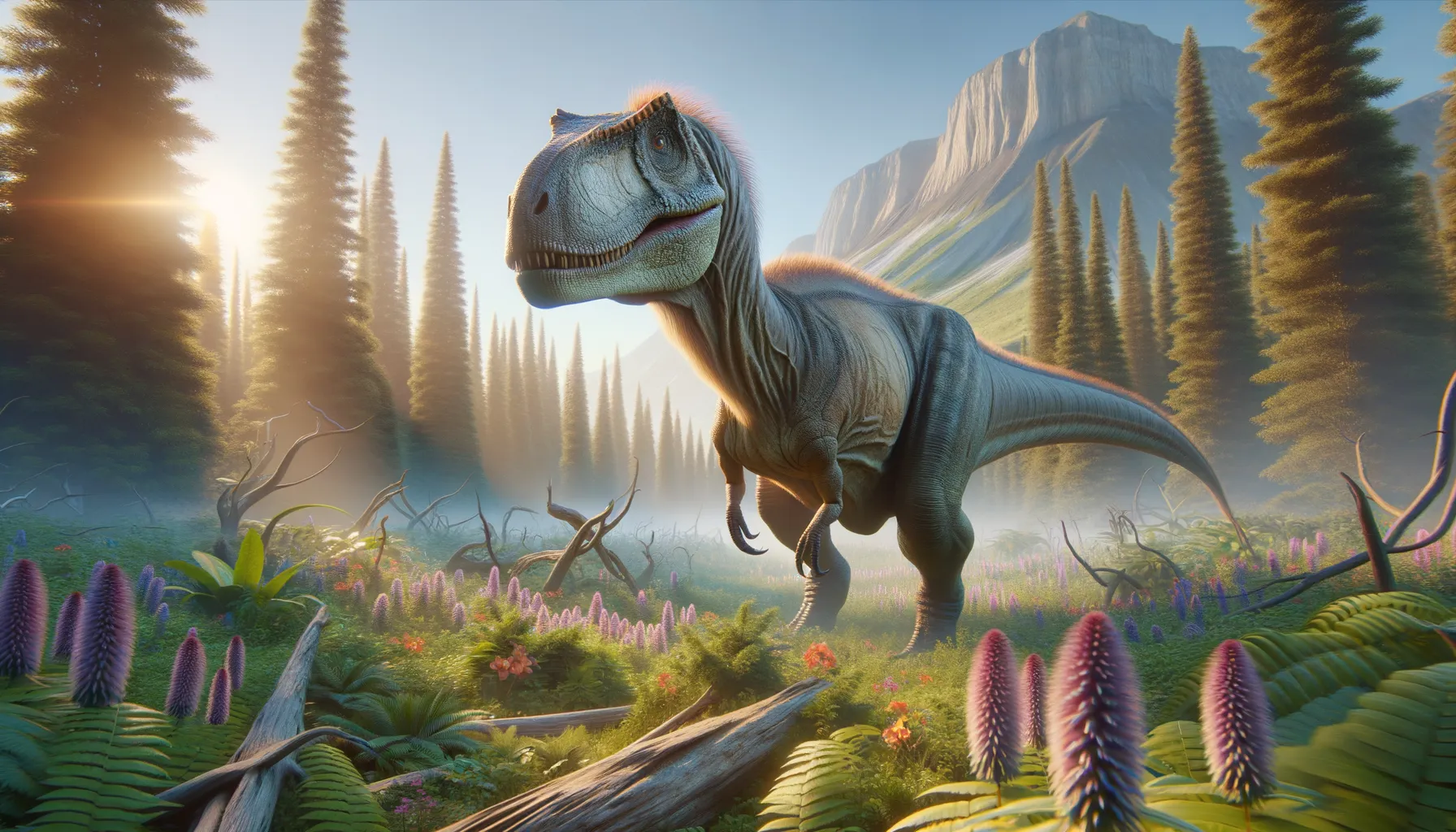
Dakotadon
An ancient grazer of the Cretaceous plains.
Period
Cretaceous
Length
Measured about 6 to 8 meters long.
Height
Stood approximately 1.5 to 2 meters tall.
Weight
Weighed around 200 to 300 kg.
Dakotadon was a medium-sized herbivorous dinosaur that lived during the Early Cretaceous period. It is known for having a beak suitable for cropping vegetation and likely had a similar body structure to Iguanodons. While not the largest of its kind, its adaptations made it successful in its ecosystem. Discoveries of its fossils have contributed to our understanding of ornithopod diversity.
Diet
Dakotadon was herbivorous, primarily feeding on a variety of plants. Its beak was adapted to cropping low vegetation, suggesting it foraged for ferns, cycads, and other ground plants.
Hunting
Being an herbivore, Dakotadon did not engage in hunting. It likely spent much of its time foraging, looking for suitable plant matter to consume.
Environmental challenges
Dakotadon faced environmental challenges typical of the early Cretaceous period, such as fluctuating climates and changes in vegetation. Predators also posed significant threats, necessitating a need for vigilance. Its relatively small size meant it had to be particularly cautious of larger theropod dinosaurs in its environment.
Speed
Moderate, but not built for high-speed running.
Lifespan
Estimated to be several decades.
First discovery
First discovered in the early 20th century.
Fun Facts
- Dakotadon was a small plant-eating dinosaur that lived during the Early Cretaceous period, over 100 million years ago.
- Its name means 'Dakota tooth,' which reflects the state where its fossils were first found.
- Despite being small, Dakotadon had strong, sturdy legs which suggest it was a speedy runner.
- Dakotadon is known primarily from its teeth and a partial skull, which shows it had a beak-like mouth.
- It belonged to a group of dinosaurs called iguanodonts, which were ancestors of the famous Iguanodon.
- Dakotadon's teeth were well-suited for chewing tough, fibrous plants, showcasing its herbivorous diet.
Growth and Development
Dakotadon likely hatched from eggs, growing rapidly to reach a size that offered some protection from predation. Evidence suggests that, like other ornithopods, Dakotadon may have had a relatively quick growth phase, reaching maturity within a few years. Its growth patterns were likely influenced by environmental factors and availability of food resources.
Habitat
Dakotadon inhabited mainly coastal and riverine environments, rich in vegetation. These habitats provided ample food resources needed for its herbivorous diet. The presence of water bodies also likely influenced its distribution, offering necessary sustenance and potential escape routes from predators.
Interaction with other species
Dakotadon likely coexisted with various other dinosaur species, both herbivorous and carnivorous. It may have formed herds for grazing and mutual protection against predators. Its presence likely contributed to the ecosystem's balance by participating in the plant consumption cycle.
Natural lifespan
Its natural lifespan could extend to several decades under ideal conditions.
Reproduction
Egg-laying was the primary reproductive method, with nests built in secluded areas. Fossil evidence of nests suggests a community nesting behavior, which may have been a strategy to enhance survival rates of hatchlings. Little is known about parental care, but it may have been limited post-hatching.
Social behaviour
Dakotadon may have lived in groups, which provided safety in numbers and facilitated social interaction. Herding behavior would enhance protection from predators and improve foraging efficiency. Social structures within these groups are speculative but suggest some level of communal living.
Fossil locations
Fossils primarily found in the western United States, particularly in regions like South Dakota. These discoveries have been crucial in piecing together the dinosaur's existence and behavior. Sites in North America continue to yield important finds, contributing to the broader paleontological record.
